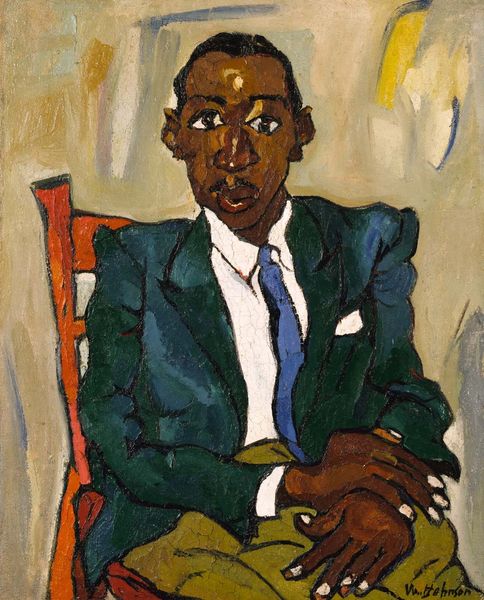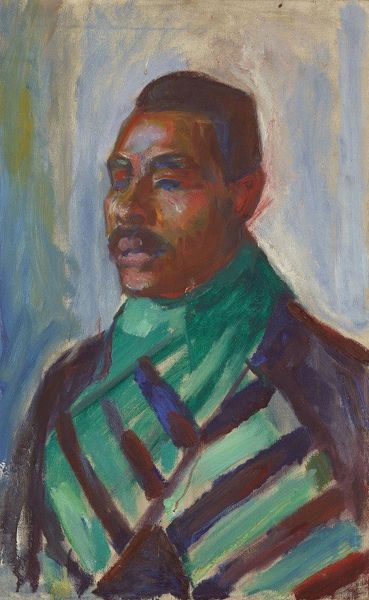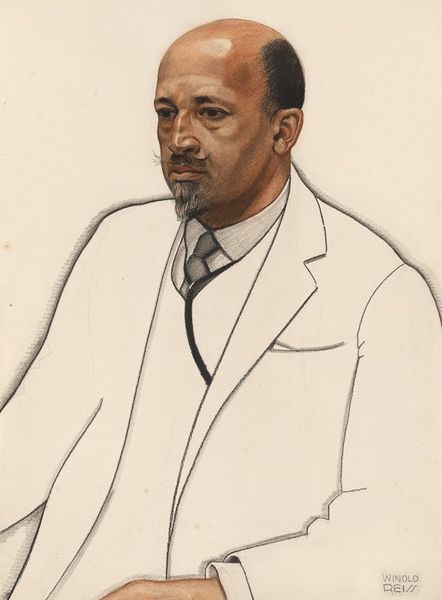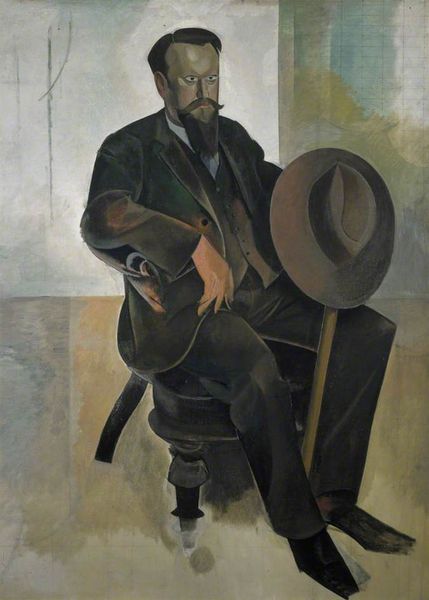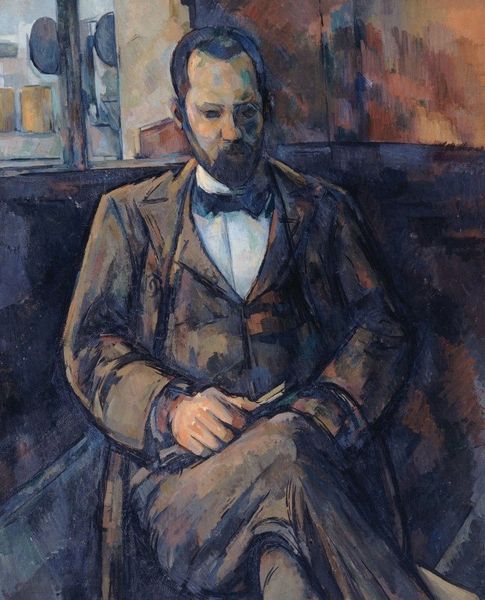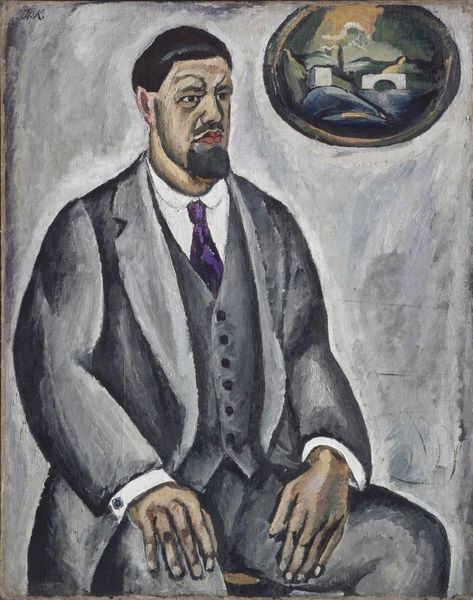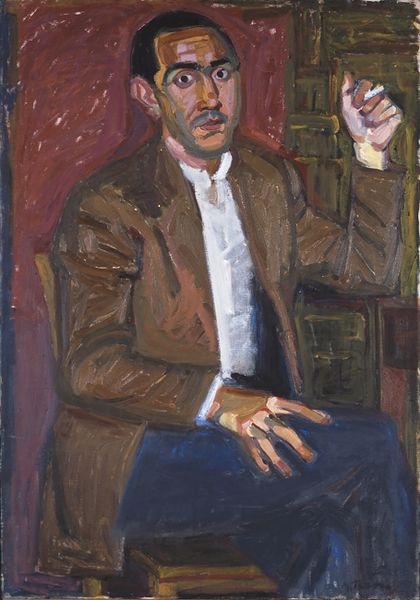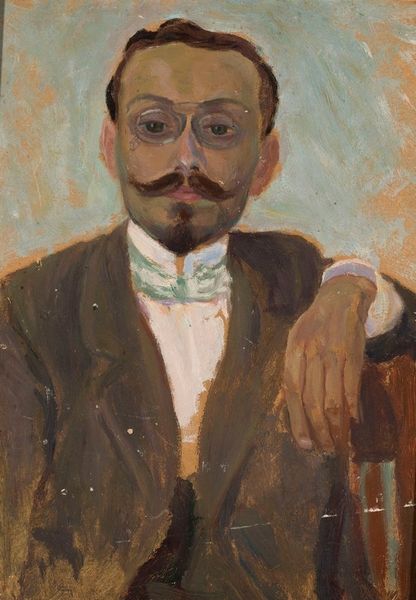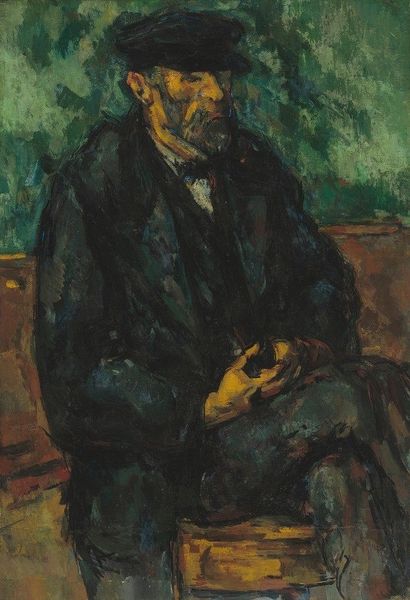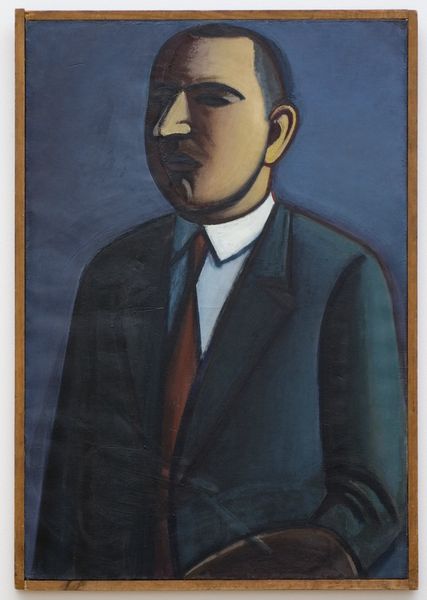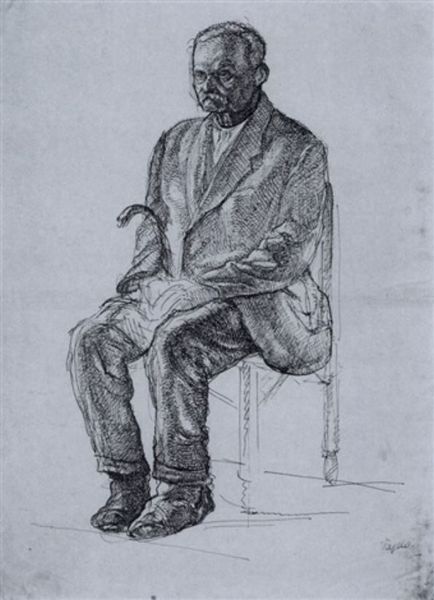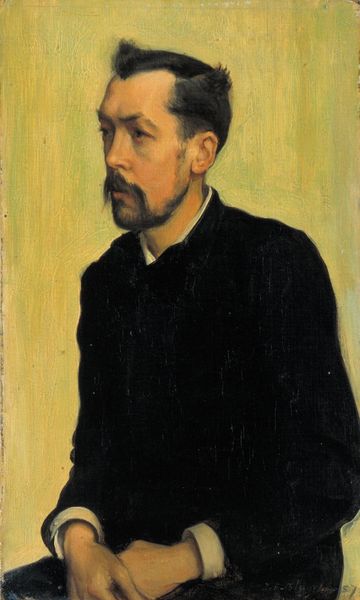
painting, oil-paint
#
portrait
#
painting
#
oil-paint
#
figuration
#
social-realism
#
ashcan-school
#
modernism
#
realism
Copyright: Alice Neel,Fair Use
Curator: Immediately, there's this feeling of intense, almost unsettling observation, isn't there? It's the gaze, unwavering and…expectant. Editor: Absolutely. This is Alice Neel’s "Hugh Hurd," painted in 1964. A stunning portrait in oil paint, currently residing at Crystal Bridges. Beyond the artistry, I'm curious about the story behind the subject, especially as a Black man portrayed in this era. What socio-political context did she bring to this, and how was the image of the sitter constructed, or perhaps contested? Curator: I imagine a rather intense, mutually respectful exchange taking place between the two of them. It's raw, though. Raw in a way that only Alice Neel can capture. Almost like she peels back a layer, leaving the subject both vulnerable and powerful. Notice the almost violent strokes defining the green jacket... it isn't about smoothness; it is all emotional reality! Editor: Her subjects were often deeply embedded in New York’s counter-cultural scene. Knowing Neel's social circle and her activist leanings gives this portrait another layer. We are pushed to ponder about his possible connection to the Civil Rights Movement, or involvement with progressive politics? And in terms of aesthetics, there’s a link with earlier social realism painting from the Ashcan school and an early brand of modernism combined together. Curator: I am fascinated by those hands. They tell their own story, don’t they? The rings, the way they rest…there's a quiet strength there, but also perhaps a weariness? Almost as if they held the weight of a world within them, maybe he’s had a few good tales to tell in his day? I also see a hint of insecurity around the way he is portrayed that's somehow deeply humanizing. Editor: I see the figure's sartorial presentation and the interior setting also playing their part within the larger discourse. These props or visual elements could convey something about status, class aspirations, and self-representation during that time. Neel seems adept at orchestrating how individuals wanted their public personas perceived! Curator: Ultimately, the strength of this painting lies in its discomfort. The challenge it gives. It isn't a passive portrait; it invites interaction, and it holds us to account! It’s a really stunning visual reminder about how seeing can become a deeply radical act. Editor: Indeed. Considering how Neel's work has been interpreted in later discourses makes revisiting “Hugh Hurd" and seeing it in its full sociopolitical milieu invaluable to those of us committed to understanding this visual art!
Comments
No comments
Be the first to comment and join the conversation on the ultimate creative platform.

